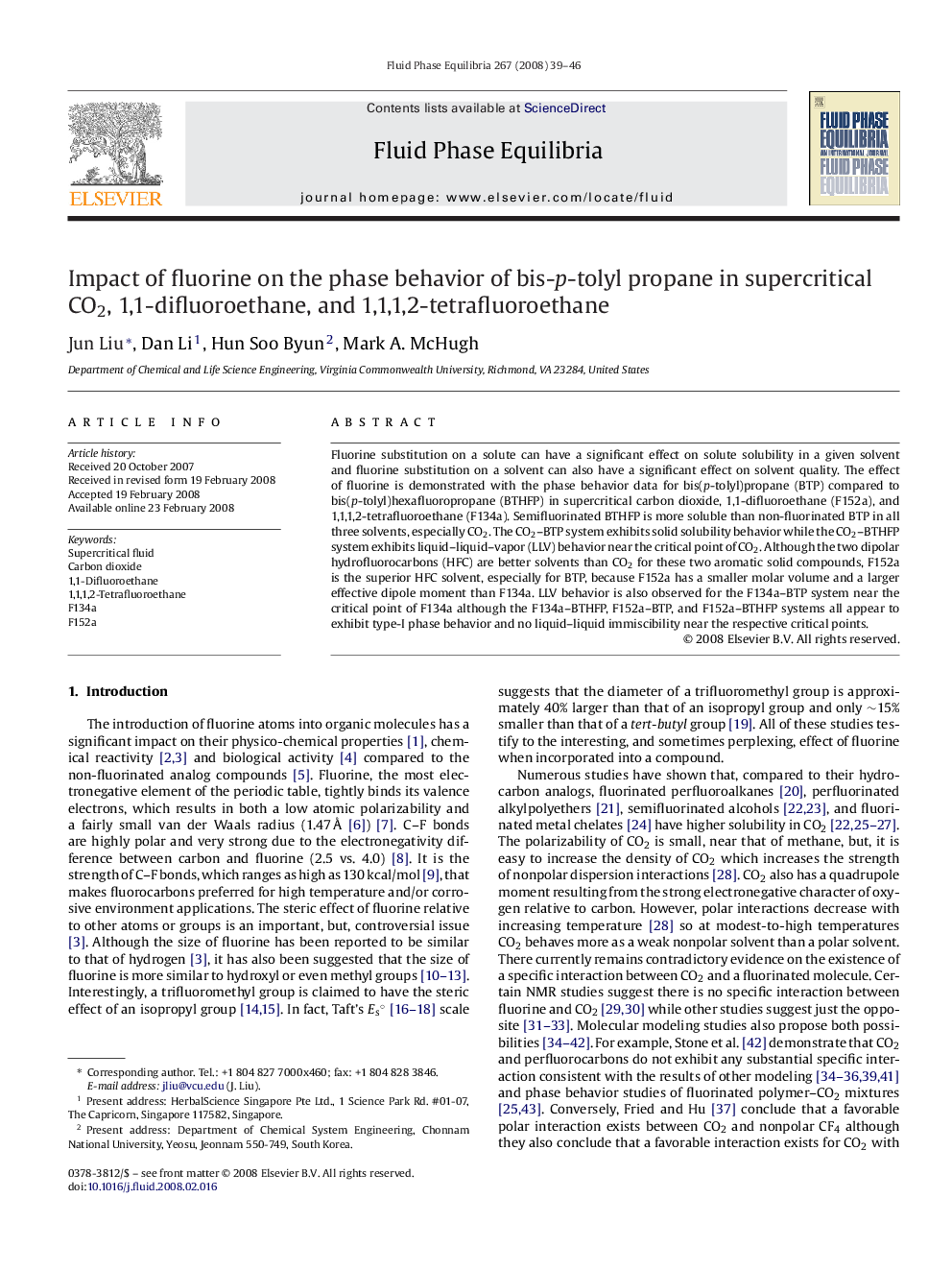| کد مقاله | کد نشریه | سال انتشار | مقاله انگلیسی | نسخه تمام متن |
|---|---|---|---|---|
| 203647 | 460669 | 2008 | 8 صفحه PDF | دانلود رایگان |

Fluorine substitution on a solute can have a significant effect on solute solubility in a given solvent and fluorine substitution on a solvent can also have a significant effect on solvent quality. The effect of fluorine is demonstrated with the phase behavior data for bis(p-tolyl)propane (BTP) compared to bis(p-tolyl)hexafluoropropane (BTHFP) in supercritical carbon dioxide, 1,1-difluoroethane (F152a), and 1,1,1,2-tetrafluoroethane (F134a). Semifluorinated BTHFP is more soluble than non-fluorinated BTP in all three solvents, especially CO2. The CO2–BTP system exhibits solid solubility behavior while the CO2–BTHFP system exhibits liquid–liquid–vapor (LLV) behavior near the critical point of CO2. Although the two dipolar hydrofluorocarbons (HFC) are better solvents than CO2 for these two aromatic solid compounds, F152a is the superior HFC solvent, especially for BTP, because F152a has a smaller molar volume and a larger effective dipole moment than F134a. LLV behavior is also observed for the F134a–BTP system near the critical point of F134a although the F134a–BTHFP, F152a–BTP, and F152a–BTHFP systems all appear to exhibit type-I phase behavior and no liquid–liquid immiscibility near the respective critical points.
Journal: Fluid Phase Equilibria - Volume 267, Issue 1, 15 May 2008, Pages 39–46